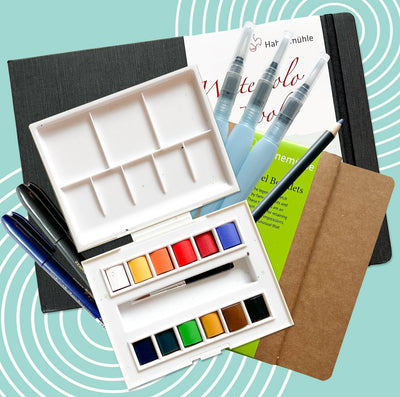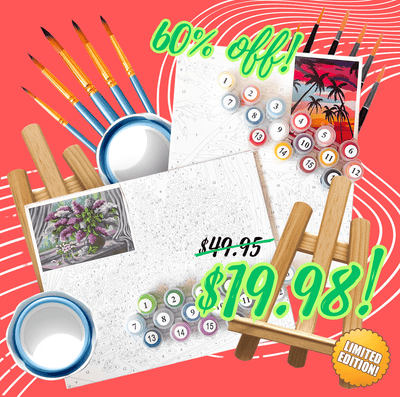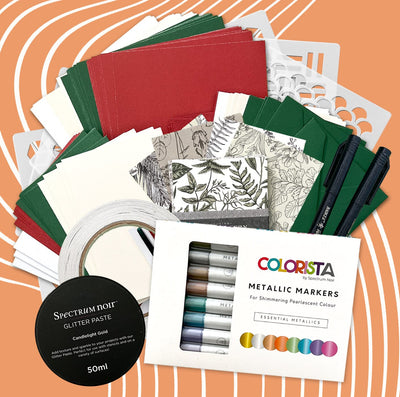
Alcohol inks have burst into popularity as a choice medium for their expressive colors and beautiful flow. However, if you're just getting started with alcohol ink, you might notice that they're a little difficult to control. Even on a non-absorbent surface, such as Yupo paper, alcohol ink requires particular methods for blending and layering until you get the effect you want.

1. Use an Alcohol Blending Solution
Alcohol blending solutions is a required tool for opening up new possibilities for how your alcohol ink looks and blends. Don't worry, though, it's not always necessary to buy blending solution, you can easily make some at home in addition to using your isopropyl alcohol for blending. Isopropyl alcohol, also known as rubbing alcohol or surgical spirits, is essential for diluting fortunately you can get it inexpensively at the drug store. Just be sure to pick up some that's 90% or more rubbing alcohol.
DIY Alcohol Ink Blending Solution
Combine the same rubbing alcohol that you use to dilute your ink with a few drops of liquid glycerin. The glycerin in the case slows the drying period and enhances the bleeding effect between the two inks that you're blending.
If you're mixing your own Blending Solution, we recommend trying out a few different ratios, to see what works best with the effect that you're trying to achieve.
How to Use You Blending Solution
- To use your blending solution, you can apply it directly onto the yupo paper. Spread it by tilting the paper and using a tool, such as a chop stick or other straight skewer, to spread it over the area where you wish to blend the ink.
- Drop the ink colors that you wish to blend onto the paper. Then, tilt the paper to spread the ink, and use your tool to guide the ink to the paper's edges.
Keep in mind that using a blending solution or rubbing alcohol will dilute and spread the ink and therefore cause the colors to dry a little lighter than the full strength would have been.
2. Use Rubbing Alcohol to Dilute Ink
Rubbing alcohol is one of your more versatile tools for when it comes to painting with alcohol ink. You can use it to dilute the ink so that it takes on a lighter transparency, for a layer blending or glazing effect.
More than that, though, rubbing alcohol is useful as a medium for your painting, similar to role that water plays in watercolor. This becomes very important for blending two shapes together, particularly if one if still wet and the other dry.
When you apply a wet ink next to a dry one, you will see a very hard line between the two shapes. To blend these two inks together and dissolve the line, use a brush dipped in rubbing alcohol. This will reactivate the ink. Using the brush, you can rub out the line, and you'll find that the two colors have blended together into a new color.
3. Precision Control Using a Blending Pen
Blending pens are pens loaded with rubbing alcohol. Some of them, however, do also have dyes that then blend together, such as chameleon pens. While a pen loaded with clear isopropyl alcohol will help you to have more control when blending the colors present on your paper, using a self-blending alcohol ink pen will allow you to make gradients as an extra layer on your design.
You can also make your own controlled blending pen using a water brush or refillable felt tip. Fill the reservoir with isoprpyl alcohol or blending solution, then squeeze out small amounts of solution as you blend.
Blending pens are also useful for lifting ink or blending out the edges of your alcohol ink, so that there isn't a crisp line where the design ends. This can be a beautiful technique for paintings that do not completely fill the surface. One way to blend out the edges is to wait until the painting has dried, then use a blending pen with clear rubbing alcohol and fade out the hard line at the edges of the image.
4. Fine Tune with an Alcohol Ink Colored Marker
Once your layers are dried, you can use alcohol ink markers to draw over your painting. Use them to add another layer, clarify the image, or darken some outlines.
That's not all though, alcohol ink markers can also help you to implement some controlled blending and texture while a layer of alcohol ink is still drying. Use them to add a new color as you pull out the edge of a pool of diluted ink or rubbing alcohol.
5. Use a Brush to Lead and Blend Ink
Without a painter's intervention, alcohol ink will most often cling to itself, concentrating its dye in a single spot. To control how the ink pools and at what strength, spread the dye around the area using a brush. The brush will help you to concentrate the dyes where you want them. With practice, you can even keep certain colors from spreading and mixing into each other.
Brushes may also help you to add texture to your blends. During the tacky part of the drying process, use brush strokes to create blends that are not an ideal smooth wash. Textured blending can be used to mark a transition from one part of an object to another, such as to indicate shading.
6. Blow Through a Straw to Create Special Effects
The primary blending method for alcohol inks requires tilting the paper, to create flat washes or the appearance of slow movement. Blowing through a straw, on the other hand, moves the ink is a way that creates the impression of splashy, rapid movement. To do this, drop the ink onto the paper. Aim a straw at the ink and blow in the direction that you want the ink to travel. For the best effect work quickly to blow the ink around before it can spread out.
7. Choose an Ink Brand with a Long Drying Time
As an alcohol ink dries, it's edges become hard and develop a thin crust. When purposeful, these edges give your image a beautifully stained-glass appearance. However, there are cases when these edges are unwanted in a certain part of your image, such as when you're working on a more intricate and seamless blend of inks.
Alcohol ink supports many artistic styles from the quick and expressive pieces to slower, more thought-through pieces. If you know that you're in the latter category here, you might opt for a brand of alcohol ink that take a longer time to dry. This will give you more time to fine tune your blending.
Ready to get started painting? Let us know how you blend your alcohol ink in the comments, and if you need more inspiration, check out our other posts on getting started with alcohol inks and the amazing artists who use them.


